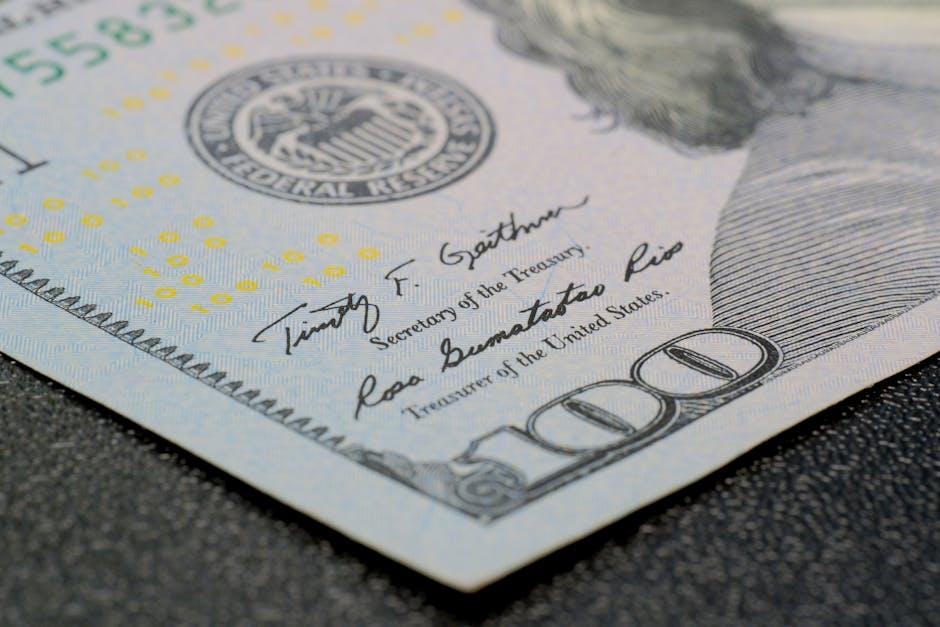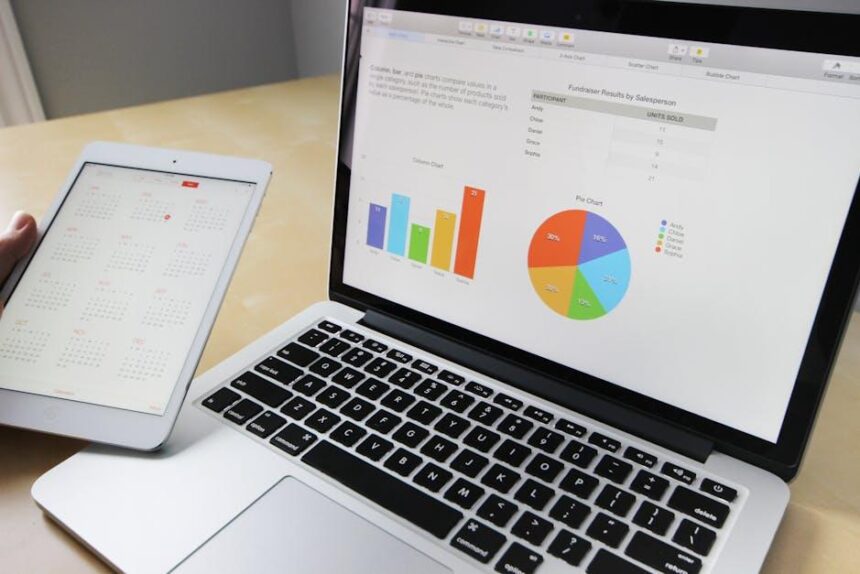Are you tired of unexpected overdraft fees derailing your financial plans? You’re not alone. Many people grapple with managing their finances effectively, only to find themselves caught in a cycle of costly bank fees. However, achieving financial mastery is within reach. In this article, we will explore practical strategies and insightful tips designed to help you take control of your finances and eliminate those pesky overdraft charges for good. Join us as we delve into essential budgeting techniques, smart banking practices, and the tools you need to cultivate a stable financial future. Say goodbye to overdraft fees and hello to a more empowered approach to money management.
Understanding Overdraft Fees and Their Impact on Your Finances
Overdraft fees can hit your wallet harder than you might expect. Understanding how they work is crucial to managing your finances effectively. Here’s a closer look at what overdraft fees are and how they can impact your budget.
When you withdraw more money than you have in your bank account, your bank may allow the transaction to go through, resulting in an overdraft. While this can be convenient in a pinch, it often comes with hefty fees. Banks typically charge between $30 to $40 for each overdraft transaction, which can add up quickly, especially if you have multiple withdrawals in a single day.
Here are some key points to consider about overdraft fees:
- Fee Structure: Each bank has its own fee structure. Some may offer a grace period, while others might charge fees as soon as an account goes into negative balance.
- Frequency of Fees: Many banks apply fees for each overdraft transaction, and if you repeatedly overdraft, you could end up paying several fees in one day.
- Daily Limits: Some institutions cap the total amount of overdraft fees that can be charged in a single day-usually around three to five transactions.
- Overdraft Protection: This service can help, but it may come with its own fees or interest. It’s essential to evaluate whether this service is worth the cost.
Let’s break down how these fees can affect your monthly budget:
| Scenario | Transaction Amount | Overdraft Fee | Total Cost |
|---|---|---|---|
| One Overdraft | $50 | $35 | $85 |
| Two Overdrafts in One Day | $100 | $70 | $170 |
| Three Overdrafts in One Day | $150 | $105 | $255 |
As seen in this table, the cost of overdrafts can snowball very quickly. Beyond the immediate fees, repeated overdrafts can also lead to a negative cycle-where one overdraft causes another, leading to a financial strain.
To avoid overdraft fees, consider these strategies:
- Monitor Your Account: Regularly check your balance using your bank’s mobile app or website.
- Set Up Alerts: Many banks allow you to set transaction alerts, notifying you when your balance is low.
- Link Accounts: Some banks let you connect a savings account for overdraft protection, which can reduce fees.
- Create a Buffer: Keeping a small balance in your checking account can help you avoid accidental overdrafts.
Understanding these aspects of overdraft fees can empower you to take control of your finances, allowing you to minimize losses and maximize savings. By being aware of how these fees can affect your money, you can make informed decisions to keep your finances healthy.

Smart Budgeting Strategies to Maintain a Healthy Balance
Maintaining a healthy balance in your finances requires a strategic approach to budgeting. Here are some effective strategies that can help you manage your money better and avoid those pesky overdraft fees:
- Create a Detailed Budget: Track your income and expenses meticulously. Use apps like Mint or You Need a Budget (YNAB) to make this process easier.
- Prioritize Your Spending: Distinguish between needs and wants. Focus on essential expenses such as housing, utilities, and groceries before allocating funds for entertainment and luxury items.
- Use the 50/30/20 Rule: Allocate 50% of your income to needs, 30% to wants, and 20% to savings and debt repayment. This framework can provide a clear structure for managing finances.
- Automate Savings: Set up automatic transfers to your savings account each month. This helps build a financial cushion without requiring active discipline each time.
- Monitor Your Accounts: Regularly check your bank accounts to catch any unauthorized transactions and to ensure you are within your budget.
- Utilize No-Fee Checking Accounts: Consider banks like Ally or Capital One 360, which offer checking accounts without monthly fees, thus keeping more of your money in your pocket.
- Plan for Irregular Expenses: Set aside funds each month for annual or semi-annual expenses such as insurance premiums, property taxes, or holiday shopping to avoid budget shocks.
Here’s a simple budgeting table to visualize your spending:
| Category | Budgeted Amount | Actual Amount | Difference |
|---|---|---|---|
| Housing | $1,200 | $1,150 | $50 |
| Utilities | $200 | $180 | $20 |
| Groceries | $400 | $450 | -$50 |
| Entertainment | $200 | $100 | $100 |
| Savings | $300 | $300 | $0 |
By implementing these smart budgeting strategies, you can pave the way to financial stability and ultimately avoid overdraft fees forever. Start today, and watch your savings grow!

Practical Steps to Build an Emergency Fund for Financial Security
Establishing an emergency fund is a crucial step in achieving financial security and avoiding unnecessary overdraft fees. Here are some practical steps to help you build your safety net effectively:
- Set a Clear Goal: Determine how much you want in your emergency fund. A common target is three to six months’ worth of living expenses. This will give you a solid cushion against unexpected events like medical emergencies or job loss.
- Open a High-Interest Savings Account: Choose a bank that offers high-interest savings accounts, available through most major banks such as Ally or Marcus by Goldman Sachs. These accounts typically have no monthly fees and allow you to grow your savings faster.
- Avoid Mixing Funds: Keep your emergency fund in a separate account from your everyday spending. This minimizes the temptation to dip into it for non-emergencies. Consider using online banks for easy access and competitive interest rates.
- Automate Your Savings: Set up automatic transfers from your checking account to your emergency fund. This “pay yourself first” strategy helps build your fund systematically without you having to remember to do it each month.
- Start Small, Scale Up: If you’re on a tight budget, start with small, manageable contributions. For example, consider saving $50 each paycheck; as you adjust your spending habits, you can increase this amount.
- Redirect Windfalls: Use bonuses, tax refunds, or gifts to give your emergency fund a boost. These unexpected financial gains can significantly accelerate your progress.
- Reassess Regularly: Periodically review your emergency fund needs. Major life changes, such as a new job, moving, or having a child, may require adjustments to your savings goals.
Creating a reliable emergency fund will not only help you handle unexpected expenses but also instill confidence in your financial decision-making. By staying disciplined and purposeful, you can pave the way to greater financial freedom.

Effective Tools for Tracking Spending and Enhancing Money Management
Managing your finances effectively is crucial for avoiding those dreaded overdraft fees and achieving financial peace of mind. Here are some effective tools to help you track your spending and enhance your money management:
- Budgeting Apps: Consider using apps like Mint, You Need a Budget (YNAB), or PocketGuard. These tools allow you to:
- Track expenses automatically through bank link integration.
- Set monthly budgets and receive alerts when nearing your limits.
- Analyze your spending habits over time.
- Online Banking Tools: Most American banks offer robust online banking services. Key features include:
- Real-time balance updates, ensuring you always know your available funds.
- Spending categorization to visualize where your money goes.
- Alerts for transactions, helping prevent unauthorized charges.
- Expense Trackers: Use tools like Expensify or Shoeboxed for capturing receipts and tracking spending on the go. These apps allow you to:
- Snap pictures of receipts and automatically categorize expenses.
- Generate reports for budgeting or tax purposes.
- Financial Management Software: Consider desktop software like Quicken. This allows for:
- Detailed cash flow analysis and long-term financial planning.
- Investment tracking and debt management tools.
Below is a comparison table of popular budgeting apps:
| App Name | Price | Key Features |
|---|---|---|
| Mint | Free | Expense tracking, budget creation, bill reminders |
| YNAB | $11.99/month | Proactive budgeting, financial goal setting, education resources |
| PocketGuard | $4.99/month | Simplified tracking, savings goals, bill tracking |
Choosing the right combination of tools can transform your financial habits and pave the way for a more secure financial future. By leveraging these resources, you can master your money and say goodbye to overdraft fees forever.

Closing Remarks
In conclusion, mastering your money is not just about avoiding overdraft fees; it’s about gaining control over your financial destiny. By implementing effective budgeting techniques, keeping track of your expenses, and making informed spending choices, you can pave the way toward a more secure financial future. The journey may require discipline and patience, but the relief of saying goodbye to overdraft fees and embracing financial freedom is well worth the effort. Start today, take small steps, and watch your confidence grow as you transform how you manage your money. Remember, every financial decision you make can lead you closer to the life you envision.











